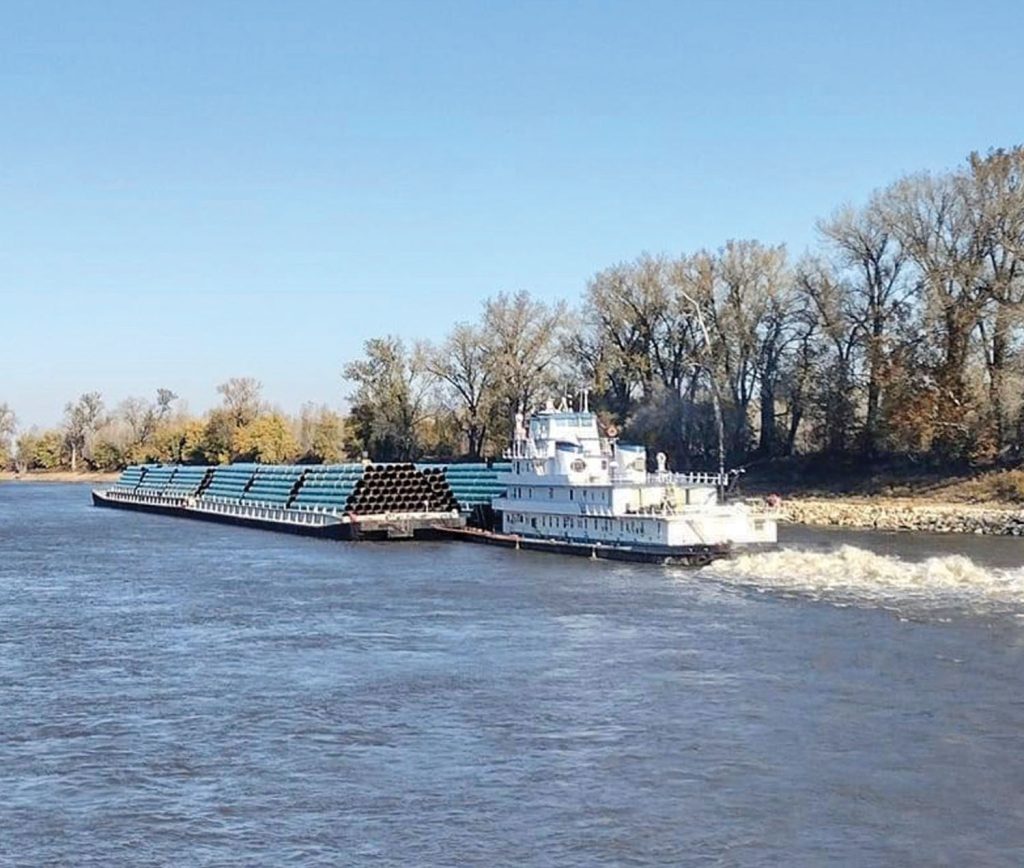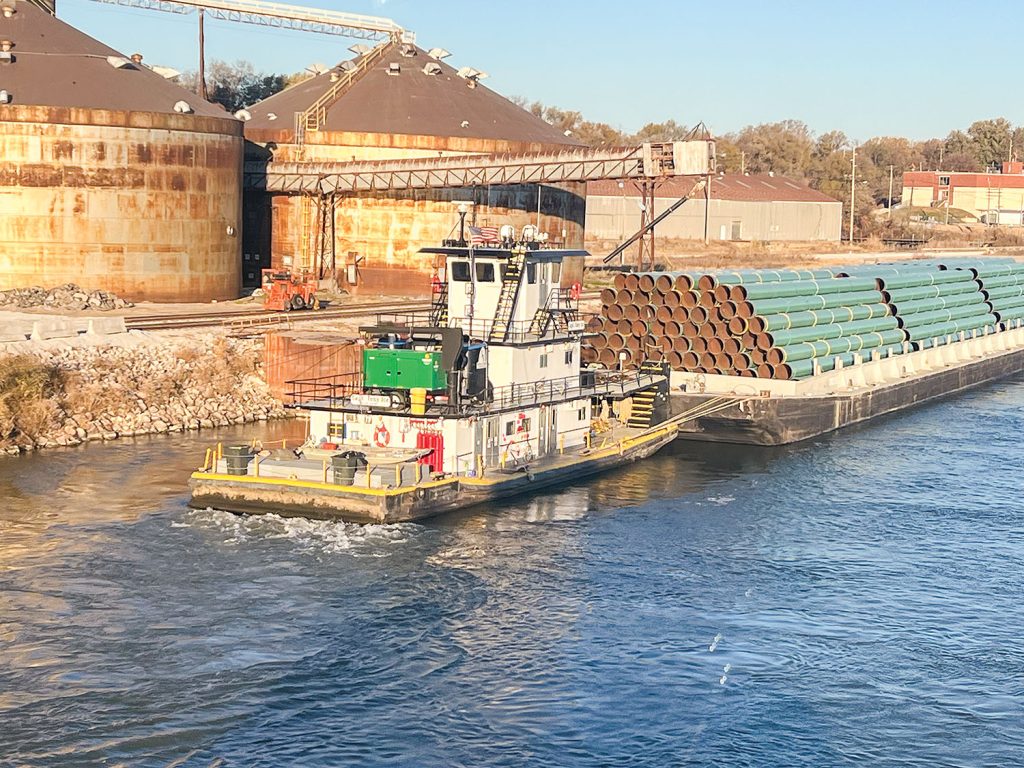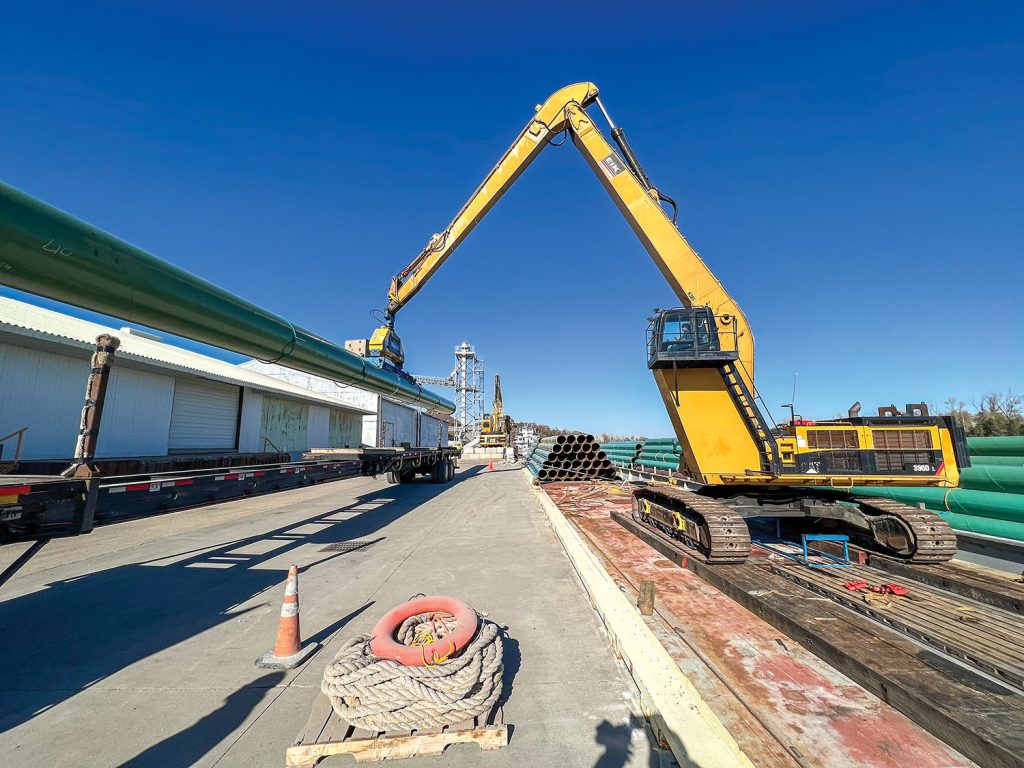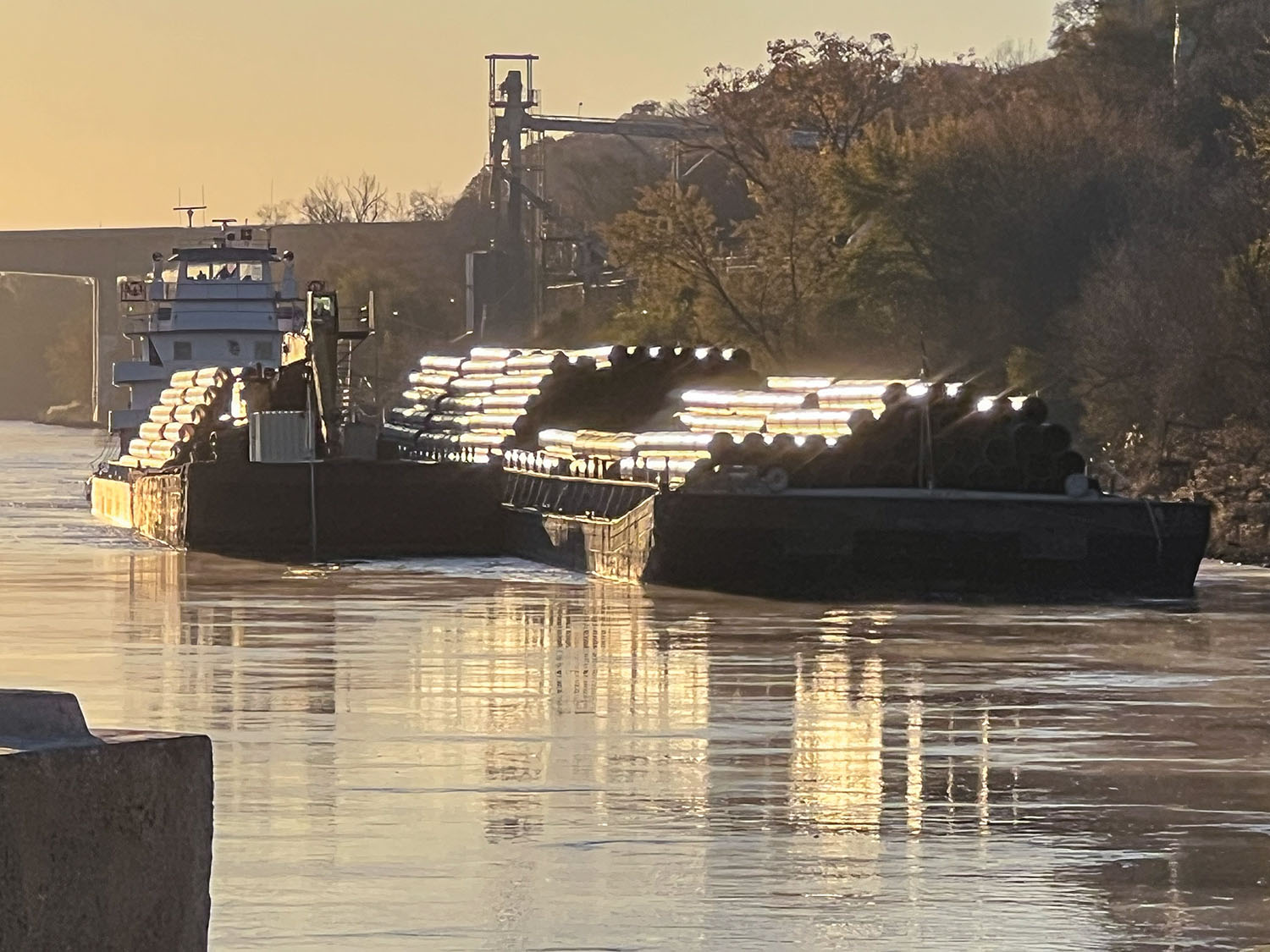A load of pipe believed to be one of the largest tows to move north on the Missouri River in years was recently delivered to Nebraska City, Neb.
The load of 12,800 tons of 36-inch line pipe left New Orleans, La., on October 10, said Tony Ice, president of Prairie State Marine Services. Eventually, it was split up into two tows, with one load arriving November 10 and the other arriving November 11.
Prairie State handles crew management for companies including Hamm’s Frontier Marine Service of Chillicothe, Ill., which was contracted to move the pipe for Coastal Marine Contractors of Slidell, La.

Coastal Marine Contractors converted eight tank barges into oversized open hopper barges. Four of the eight barges, together equaling the size of nine 200-by-35-foot jumbo barges, were used in the tow, said Allen Warriner, president of Coastal Marine Contractors.
The tow was 600 feet long by 108 feet wide initially until broken up into two tows due to low water causing a reduced channel width on the Missouri.
Marc Davis, vice president of Prairie State Marine Services, said that ultimately proved to be the best decision, given conditions, to create better efficiencies for the vessels.
“We were ready to adapt to whatever came along, and that’s what we did,” he said.
Warriner said he made the decision to convert the tank barges into hopper barges for pipe transport because of a lack of affordable hopper barges in good condition on the market.
“They’re ideal for handling the 80-foot lengths of pipe because the inside dimensions of the hopper are greater than 260 feet, so we can fit three lengths in there,” he said. “It worked out really well. They make a nice unit tow.”
Coastal Marine Contractors has been involved in several shipments of pipeline to Texas from Mississippi, he said.
For this tow, Coastal Marine Contractors’ mv. Coastal Runner brought the pipe from the manufacturer, Jindal Tubular U.S.A., picking it up at Port Bienville, Bay Saint Louis, Miss., for an initial trip to New Orleans. From there, Hamm’s Frontier Marine Service’s mv. Frontier Express and mv. Tony Ice brought the pipe from New Orleans to St. Louis, Mo. The mv. Kevin Michael, a twin-screw, 5,600 hp. towboat owned by East Side River Transportation of Swansea, Ill., moved the tow up the Missouri with the assistance of the mv. Tony Ice, which carried a material-handling barge for unloading the pipe and eventually took on two of the four barges after the reduced channel width made it necessary to do so.

The mv. Tony Ice is a twin-screw, 2,400 hp. vessel owned by Hamm’s Frontier Marine Service.
“The Kevin’s probably one of the largest boats that’s been up there in a really long time,” Ice said.
The trip went relatively smoothly with the exception of three days of delays traversing the Lower Mississippi while waiting for dredges or the movement of southbound traffic in narrow parts of the channel, Warriner said.
Additionally, shoaling above Mile 85 on the Missouri prompted the decision to split the tow between the two vessels.
The pipe was unloaded at Heartland Terminals. From there, 80-foot lengths were loaded onto trucks and transported to the cargo’s final destination in Beatrice, Neb., Warriner said.
He said the various companies involved had been looking at the logistics of the transport since July, with the final decision to move the pipe by water instead of rail made in August.
The planning for the trip was a group effort. Those involved said they wanted to express appreciation to those who worked together to make the unusual shipment possible, singling out Jim McEvilly of East Side Transportation, Capts. Andy Belza and Jesse Edler and President Steve Engemann of Missouri River Towing and Randy Weibrecht of Central Stone Company for their cooperation and collaboration.
Davis praised the Corps of Engineers, saying that the investments into the system that the Corps has made were key to making the transport possible.
“Five years ago, I wouldn’t have tried this at this flow,” he said.

Davis spent much of the trip piloting the mv. Tony Ice, “running bird dog” for the Kevin Michael with its tow of pipe, making sure the channel was safe for it to come along behind it.
Davis said the trip required knowledge of the river and its peculiarities.
“You have to measure your speed,” he said. “If you get going too fast, you can’t make the turns, but if you’re too slow, you may get set out on the dikes.
Davis added, “It’s quite a bit different from the Mississippi and the locking rivers for sure.
Ice also praised the work of the Corps of Engineers in maintaining the dike system, which has effectively scoured the river bottom, meaning dredging has been unnecessary on the Missouri, despite low-water conditions throughout the system.
Caption for top photo: Arrival of mv. Kevin Michael in Nebraska City. (Photo courtesy of Prairie State Marine Services)




